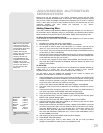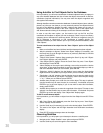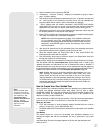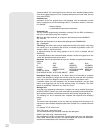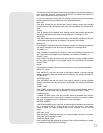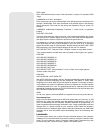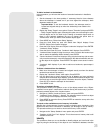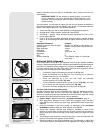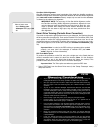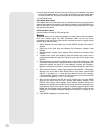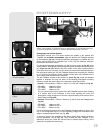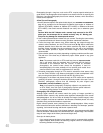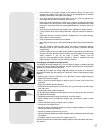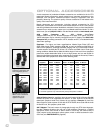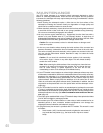
37
One-Star Alt/Az Alignment
One-Star Alignment requires some knowledge of the night sky. AutoStar provides a
database of bright stars. One-Star Alignment is identical to Two-Star Alt/Az: Alignment
(see
TWO-STAR ALT/AZ ALIGNMENT, abo
ve), except only one star from this database
is chosen by the observer for alignment.
IMPORTANT NOTE: The accuracy of One-Star Alt/Az Alignment, unlike
the
Two-Star and Easy (Alt/Az) Alignment procedures, depends on how
w
ell the observer levels the telescope and how close to North the tele-
scope is pointed when setting the Home Position. Because the other
methods use two stars to align upon, they are more precise than One-
Star Alignment.
Smart Drive Training (Periodic Error Correction)
If you wish to improve the gear performance on your telescope, first, perform the train
the drive procedure (see page 55).Then use the Periodic Error Correction (PEC) Train
menu option to remove the slight perturbations from center that occur due to the
mechanical nature of a telescope.To perform this procedure, you need to use a high-
power reticle eyepiece, such as the 9mm reticle (see
OPTIONAL ACCESSORIES, page
42).
Important Note: In order for the PEC training to operate and be updated
properly, you must “park” the telescope to maintain PEC (see
PARK
SCOPE, page 26, for more information).
PEC Train Menu Option
To perform the procedure on the R.A. axis, pick a bright star in the South that has
minimal movement and is about 30° above the horizon (
Note: If in the Southern
hemisphere, pick a star in the North that is about 30° above the horizon)
. This
procedure takes about 24 minutes for the ETX Premier telescopes.
Important Note: The Train option overwrites any previous PEC data.
1. Select "PEC Train" from the Smart Drive menu (in the "Setup: Telescope" menu)
and press ENTER.
Want to learn more
about
Parking your
telescope?
See page
26.
ETX TIPS
Observing Considerations
•
Try to pick an observing site away from street and house lights and car
headlights
. While this is not always possible, the darker the site, the better.
•
Giv
e your eyes about ten minutes to adjust to the darkness before observing.
Giv
e y
our eyes a rest from observing every ten or fifteen minutes to relieve
eyestrain.
•
T
r
y not to use a standard flashlight.
Exper
ienced obser
vers use red LED
flashlights
, the red utility light on the A
utoStar handbo
x or tape red cellophane
o
v
er their flashlights to use f
or setup and map reading so the
y don’t ha
v
e to
contin
ually readjust their e
y
es to the dar
kness
.
Be careful not to shine bright
lights if there are other obser
v
ers in the area.
Do not shine a flashlight into the
telescope while someone is obser
ving!
• Dress warmly. It gets chilly when you’re sitting for prolonged periods.
• Practice setting up your equipment during the day or in a lighted area to
become familiar with it before going to a dark site.
•
Use y
our 26mm eyepiece to view terrestrial objects and wider areas of space,
such as open star clusters
.
Use optional higher power eyepieces, such as a
9mm e
y
epiece (see
OPTIONAL A
CCESSORIES
, page 42 f
or more details), when
y
ou wish to vie
w something up close, such as craters on the Moon or the rings
of Satur
n.
• Bring your instructions manual along with you when you observe. Become
familiar with its layout, so it will be easier for you to look up information with just
a (red) flashlight.
•
In
vite y
our fr
iends and family to come and observe with you. But practice
locating 3 or 4 objects to sho
w them bef
orehand;
if y
ou have long delays, they
will become bored and lose interest.
Also
, demonstr
ate ho
w to focus the
telescope in a w
ell-lit area bef
ore y
ou go to to the obser
ving site.



